If there were an award for the compromise of the year, I would be tempted to give it to the stars of this review. The PMC Prodigy 5 are the brand’s most affordable floor-standing speakers, a brand that first gained notoriety for its professional monitors, and later in the high-end consumer market.
These speakers represent a compromise between their volumetric footprint, the friendly and transparent way they musically pair with any amplifier, and the sound quality that exceeds expectations for the price, even in recordings intended for less sophisticated equipment.

What did I pair the Prodigy with?
When these PMCs arrived, the Alacrity Audio Dundee 5 were also here. Like the Prodigy 5, they are floor-standing speakers built around a transmission line architecture. However, these two models differ considerably in several aspects, including the sensitivity — 81dB for the Dundee and 87dB for the Prodigy. In terms of volumetric footprint, these Prodigy are to the Alacrity what Allen Iverson was to Kareem Abdul-Jabbar. It is worth noting that the Dundee cost three times more than the Prodigy currently do (€2,395). Other speakers that were also around and used as benchmarks were the Triangle Borea 03 and the Indiana Line Diva 252 monitors.
To power the PMC Prodigy 5, three different integrated amplifiers were used: the Axxess Forté 1 (review: click here), a class D; the Serblin & Son Frankie EX (review: click here), a class A/B transistor amplifier; and the AudioNote Cobra (review coming soon), class A tube amplifier. The sources were, for analog, the MoFi StudioDeck turntable (review: click here) with its original arm, and StudioTrack cartridge, and Rothwell Simplex phono preamp. In the digital domain, the Denon DNP-2000NE and Eversolo DMP-A6 Master Edition streamers (review here).
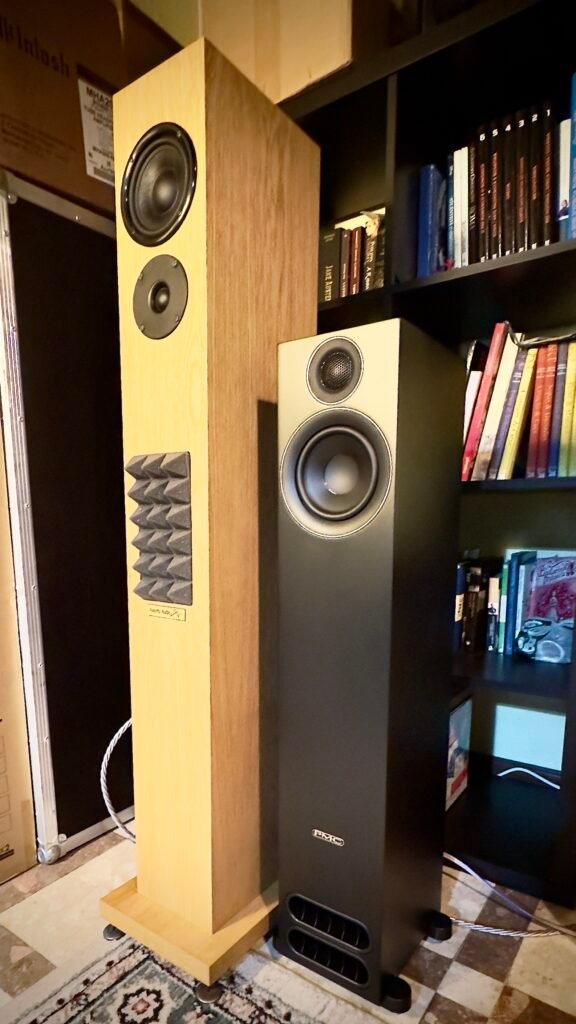
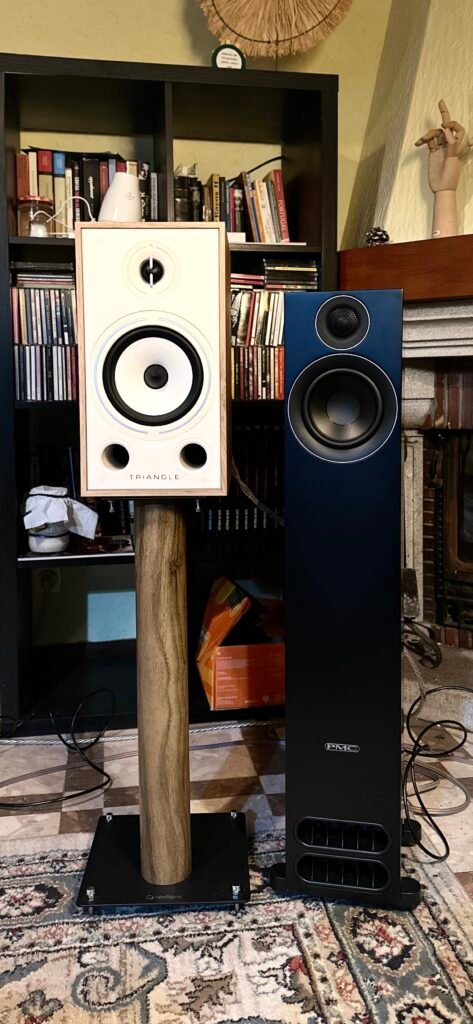
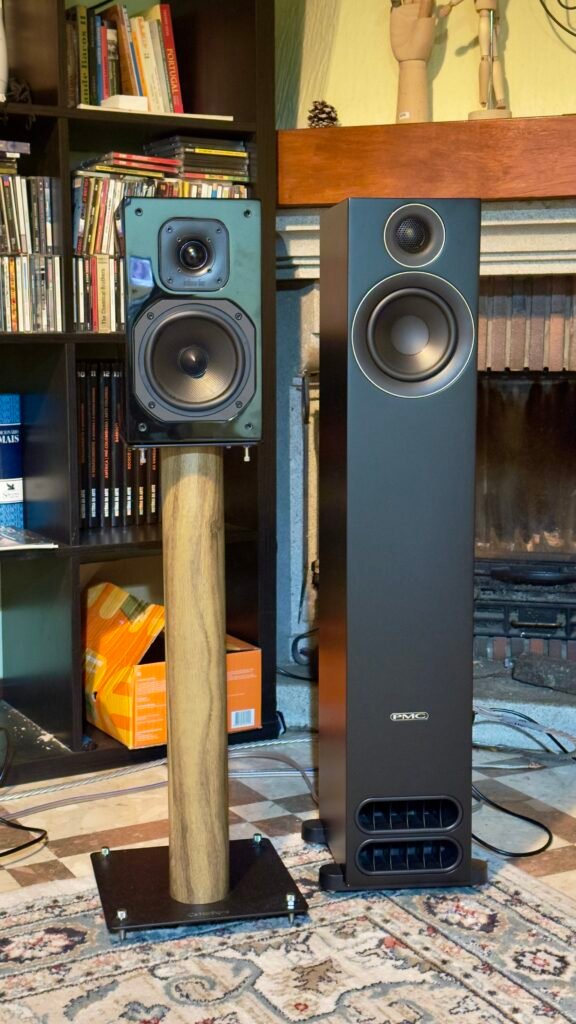
What the eyes saw
In terms of volumetric footprint, only the Diva, on the 60cm high stands, rivaled the PMC, although the Prodigy can be positioned close to the front wall, while the Diva benefit from distance to the walls. This is the great advantage of transmission line architecture, besides digging deeper bass than their modest size would suggest. This is an important factor in small spaces or for people who do not live alone and need to adjust the arrangement of the furniture and speakers.
Regarding aesthetic appreciation, I am usually not a great fan of black speakers. In this case, PMC managed to make me bite my tongue with its austere yet elegant combination of matte black with bronze circles around the tweeter and woofer. A detail I liked was the metal protective grille for the tweeters. My youngest son is 5 years old, and the over-thirty-year-old speakers of great sentimental value that we have at home already bear his fingerprints from when he was 3. Just a small note (you know I am picky): I would have preferred a more refined material for the feet, where the spikes are screwed in, which are flawless. Don’t get me wrong, it is a quality plastic that appears rigid, resistant, and durable, but at these price point, one might expect something a bit more refined. Or not? Did PMC spend the budget where it matters? Time will tell.
So, how do the Prodigy 5 sound?
Listening to “Jamming” by Bob Marley & The Wailers, and compared to the Alacrity, both powered by the Axxess Forté 1 (class D all-in-one integrated with 100W), the Prodigy confirmed this integrated’s tendency for power, transparency, detail but with an organic touch, and a huge, gigantic soundstage, both in width and height. And how do I know this amplifier has these characteristics? Because that’s how these speakers sounded. Regarding depth, it also confirms that the distance to the front wall is not necessarily proportional to the soundstage depth, at least not with the Prodigies. Throughout the rest of the Exodus album, I heard good instrument separation and a sketch of the space where each musician is positioned.
How did I position the Prodigy 5 to optimize soundstage and bass?
The distance between the speakers was about 2.40m. Although they were as close as possible to the front wall, they ended up having an effective distance of 40 to 50 cm due to the bookshelves and CDs against the wall. The ideal toe-in in my room? The outer spikes were about 4 cm ahead of the inner ones.
I also heard the Prodigy notably reduce the huge gap in price difference in the greatest qualities of the Dundees: soundstage, nuances, detail, ability to handle complex passages, and especially in the sense of timbral accuracy. The PMC might even be slightly more efficient, with a quicker “kick.” If I didn’t know the prices (new) of each model in advance, I would at least gamble that the price gap with the Alacrity was much, much smaller. The arrival of the PMC in my listening room coincided almost simultaneously with the departure of the Axxess and the Alacrities, and I had very little time for critical listening, but it was the wide, high, and reasonably deep soundstage that stood out, and of course, above all, as in all other scenarios I tested them, the way they dig into the low frequencies. If Howard Carter had a pair of Prodigy 5, Tutankhamun’s tomb would have surfaced sooner.
And with a class A/B amplifier?
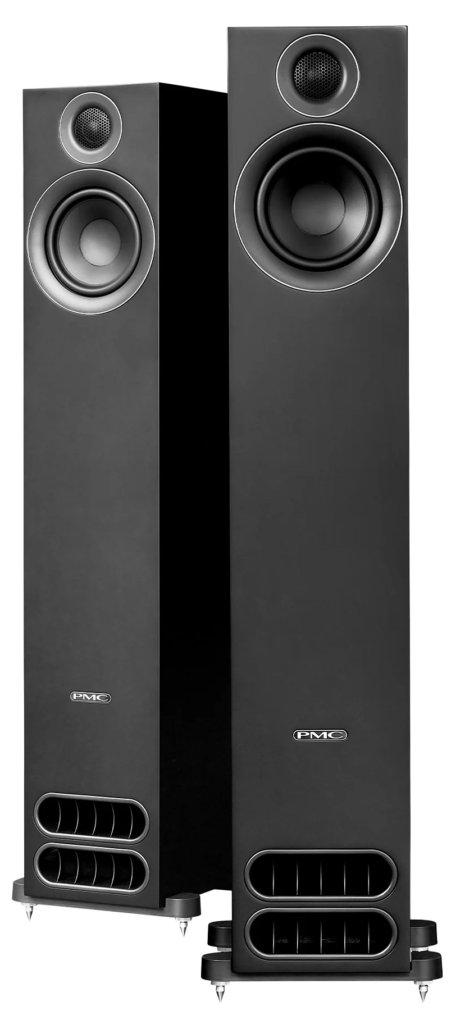
The Serblin & Son Frankie EX is a 75W transistor integrated amplifier and has been my reference amplifier as it has been here for several months. The Forté 1 and the Frankie are two animals with very different personalities. The Forté 1 is a Viking, but forget the helmet, face paint, and scenes of violence in Scottish villages of yore. This one was taught to eat at the table with knife and fork, educated by the finest British manners. The Frankie wears Armani and plays midfield like Pirlo. For the asking price, many potential buyers of the Prodigy 5 will have an integrated in this Frankie’s price range at home, yet the British floor-standers were not at all intimidated by the Danish amplifier, which costs more than twice as much.
Lou Reed’s “Dirty Blvd.,” the timing of the New Yorker’s declamation here seemed like rap, such was the sharp compassing of his words. Alabama Shakes’ “You Ain’t Alone,” once again the intensity of the attack of the pedal guitar stood out, despite not being this amplifier’s forte.
Finally, the AudioNote Cobra, a class A tube integrated with 28W. By the book, the Prodigy wouldn’t be the ideal match for this amplifier, with its 87dB sensitivity. But in music, as in life, the best matches are not always the most obvious. And what a match this was!
The Prodigy surprisingly dug deep into the bass in Prokofiev’s “Romeo and Juliet, Dance of the Knights,” with Lisa Batiashvili and the Chamber Orchestra of Europe, balancing Batiashvili’s subtle details and musical filigrees with a sense of presence and balance, using both the surgeon’s scalpel and the blacksmith’s hammer to do justice to this magnificent piece. Quick when it’s needed, open when required, and agile also.
They also played Alabama Shakes, Black Keys, and The Kills, bands that insist on staying on my playlists, in a way that I consider honest, visceral, and dynamic, just as listening to Alabama Shakes, Black Keys, and The Kills should be.
The fiddle in Tindersticks’ “Milky Teeth,” or Black Francis’ screams in Pixies’ “Caribou,” which would “freeze” my ears with other speakers, wit the PMC’s it did not, and I could enjoy them as I did thirty years and three children ago.
James Blake’s “Limit to Your Love,” with scale and control over the tricky bass of this track.
What’s the verdict?
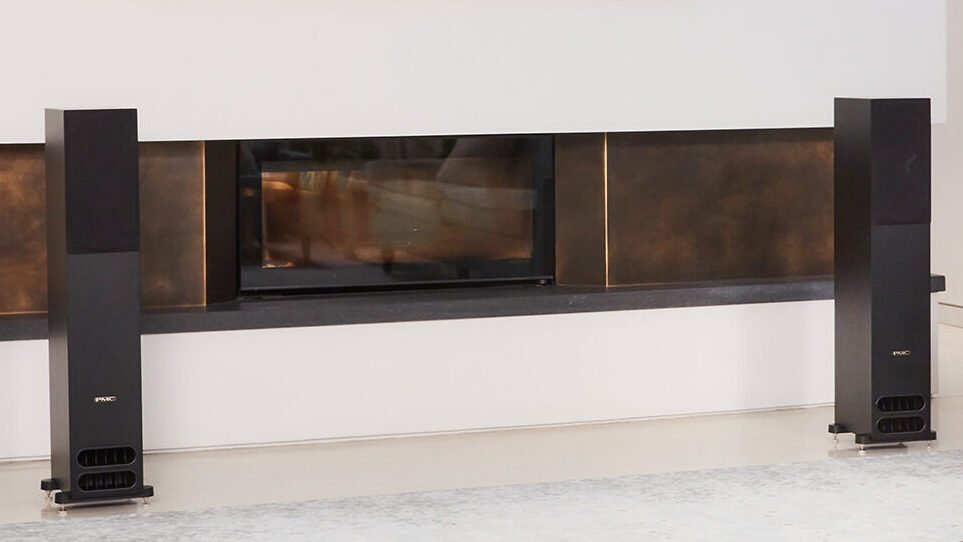
Besides the ease of positioning, which is much more than a detail, something very important to me stands out: whatever I threw at them, the Prodigy 5 always played well, always with transparency to the amplifier’s personality and, more importantly, to the spirit of the music being played. Whether it was orchestral classical, delicate female voices, rock, or dance music. Even the Cobra, with its EL34 tubes and modest 28W in class A, was able to excite every cubic millimeter of my room with sweet and exciting music.
If there were an award for the commitment of the year, these PMCs would be well on their way for winning it.
Equipment in this review
- PMC Prodigy 5, transmission line floorstanding speaker
- Alacrity Audio Dundee 5, transmission line floorstanding speaker
- Triangle Borea 03, monitor speaker
- Indiana Line Diva 252, monitor speaker
- Serblin & Son Frankie EX, solid state class AB integrated amplifier
- Axxess Forté 1, solid state class D integrated amplifier
- AudioNote (UK) Cobra, class A Valve integrated amplifier
- Eversolo DMP-A6 Master Edition, streamer
- Denon DNP-2000 NE, streamer
- cabling and power distributor from Ansuz
Specifications
- Available Finishes: Silk Black
- Crossover Frequency:1.7kHz
- Horizontal Directivity:80 degrees
- Vertical Directivity:70 degrees
- Dimensions:H 905mm 35.6” (+20mm spikes) W 165mm 6.5” (233mm incl. plinth bars) D 237mm 9.3” (+10mm optional grille)
- Drive Units:LF PMC 5.25”/133mm natural fibre long-throw LT™
HF PMC 27mm /1” soft dome - Effective ATL™ Length:1.96m 6.4ft
- Frequency Response:35Hz – 25kHz (-3dB)
- Impedance:6 Ohm
- Input Connectors:One pair 4mm binding posts
- Sensitivity:87.3dB SPL 1W 1m
- Peak SPL:124dB SPL
- Recommended Amp Power:20 – 250W
- Weight:10kg 22lbs ea.
- Options:prodigy5 grille
